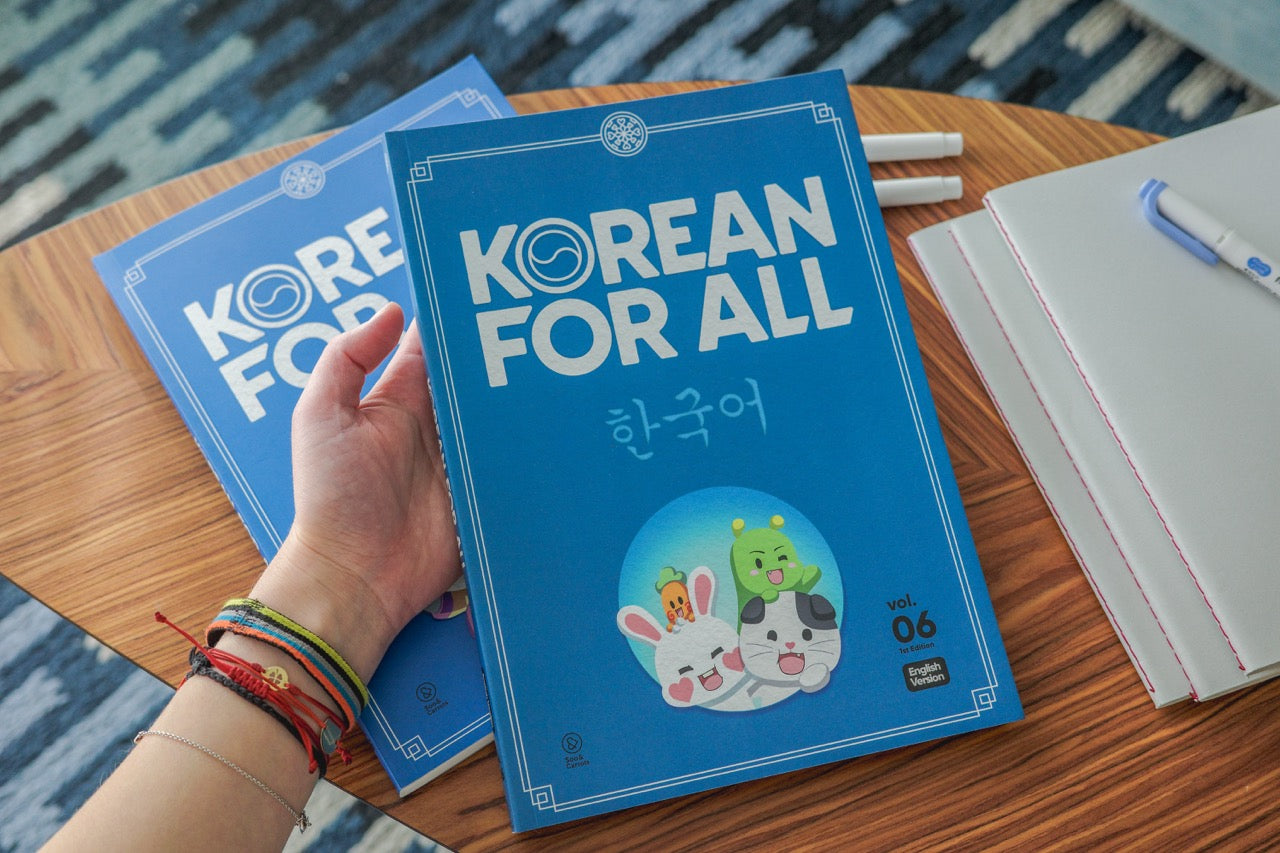Mastering Hangeul Vowels (모음_한글)

A Comprehensive Guide to Korean Vowels: Pronunciation & Examples
Korean, unlike English, has a phonetic alphabet called Hangul (한글), which consists of 14 consonants and 10 basic vowels, along with several diphthongs (combined vowels). If you want to learn Korean properly, understanding vowels is essential since they form the foundation of pronunciation.
In this guide, we’ll explore all Korean vowels—their pronunciation, usage, and plenty of example words.
1. The 10 Basic Korean Vowels
Korean vowels are divided into simple vowels and complex vowels (diphthongs). The basic vowels are:
| Hangul | Romanization | Pronunciation Guide | Example Word |
|---|---|---|---|
| ㅏ | a | Similar to "a" in "father" | 바나나 (banana) – banana |
| ㅑ | ya | Similar to "ya" in "yacht" | 약 (yak) – medicine |
| ㅓ | eo | Similar to "aw" in "saw" | 버스 (beoseu) – bus |
| ㅕ | yeo | Similar to "yaw" in "yawn" | 여자 (yeoja) – woman |
| ㅗ | o | Similar to "o" in "go" | 고양이 (goyangi) – cat |
| ㅛ | yo | Similar to "yo" in "yoga" | 요리 (yori) – cooking |
| ㅜ | u | Similar to "oo" in "moon" | 우유 (uyu) – milk |
| ㅠ | yu | Similar to "you" in English | 휴대폰 (hyudaepon) – cell phone |
| ㅡ | eu | A sound not found in English, between "u" in "put" and "i" in "bit" | 크다 (keuda) – big |
| ㅣ | i | Similar to "ee" in "see" | 이름 (ireum) – name |
Tips for Pronouncing Basic Vowels
- ㅏ and ㅓ: English speakers often struggle with ㅓ (eo) because it’s deeper than a regular “o.”
- ㅜ and ㅡ: ㅜ (u) sounds like "oo" in "moon," while ㅡ (eu) has no exact English equivalent. Try saying "ugh" with a relaxed tongue.
- ㅗ and ㅜ: The main difference is lip rounding—round your lips more when pronouncing ㅜ.
2. Complex Korean Vowels (Diphthongs)
Diphthongs are combinations of basic vowels, creating new sounds.
2.1 Double Vowels
These vowels add an "i" (ㅣ) sound to the basic vowels.
| Hangul | Romanization | Pronunciation Guide | Example Word |
|---|---|---|---|
| ㅐ | ae | Similar to "a" in "man" | 세계 (segye) – world |
| ㅒ | yae | Similar to "ye" in "yes" | 얘기 (yaegi) – story, talk |
| ㅔ | e | Similar to "e" in "bed" | 개 (gae) – dog |
| ㅖ | ye | Similar to "ye" in "yes" | 예술 (yesul) – art |
Note: ㅐ (ae) and ㅔ (e) sound almost identical in modern Korean.
2.2 Compound Vowels
These vowels combine ㅗ, ㅜ, and other vowels to create blended sounds.
| Hangul | Romanization | Pronunciation Guide | Example Word |
|---|---|---|---|
| ㅘ | wa | Similar to "wa" in "water" | 사과 (sagwa) – apple |
| ㅙ | wae | Similar to "wa" in "wag" | 왜 (wae) – why |
| ㅚ | oe | Similar to "we" in "wet" | 외국 (oeguk) – foreign country |
| ㅝ | wo | Similar to "wo" in "wonder" | 원 (won) – Korean currency |
| ㅞ | we | Similar to "we" in "west" | 웨딩 (weding) – wedding |
| ㅟ | wi | Similar to "we" in "week" | 위치 (wichi) – location |
| ㅢ | ui | A mix of eu + i, sounds like "oui" in "Louis" | 의사 (uisa) – doctor |
3. How Korean Vowels Form Syllables
Korean syllables are built by combining vowels and consonants into blocks. A basic syllable structure follows these rules:
- A syllable always starts with a consonant (except for vowels alone).
- A vowel can stand alone but must be accompanied by ‘ㅇ’ (silent placeholder).
-
Syllables follow specific structures:
- CV (Consonant + Vowel): 나 (na), 너 (neo), 가 (ga)
- CVC (Consonant + Vowel + Consonant): 책 (chaek), 집 (jip)
- CVCC (Consonant + Vowel + Double Consonants): 없다 (eopda – "to not exist")
4. Common Pronunciation Challenges
4.1 ㅐ vs. ㅔ (ae vs. e)
- These sound almost the same, so Koreans often mix them up in writing.
- Example:
- 배 (bae) – boat, stomach
- 베 (be) – a type of fabric
4.2 ㅚ vs. ㅙ vs. ㅞ
- In fast speech, ㅚ (oe), ㅙ (wae), and ㅞ (we) sound almost the same.
- Example:
- 왜 (wae) – why
- 외 (oe) – foreign, outside
- 웨 (we) – from English "wedding"
4.3 ㅢ (ui) Pronunciation Variations
- At the beginning of words, it sounds like "ui": 의사 (uisa – doctor).
- When used as a particle (possessive, 의), it sounds like "e": 나의 (nae) – my.
- In casual speech, it often simplifies to "i": 희망 (himang – hope).
5. Practice: Reading & Speaking
To improve your pronunciation, try reading these words aloud:
- 기회 (gihoe) – opportunity
- 회의 (hoeui) – meeting
- 학교 (hakgyo) – school
- 왜요? (waeyo?) – Why?
- 외국인 (oegugin) – foreigner
- 바다 (bada) – sea
- 우유 (uyu) – milk
- 휴가 (hyuga) – vacation
- 시계 (sigye) – clock, watch
- 배고파요 (baegopayo) – I'm hungry
Korean vowels are straightforward but can be tricky for beginners. Mastering them is crucial for pronunciation and reading fluency. Try practicing daily by reading simple words aloud. The more you listen and repeat, the more natural your pronunciation will become!
Would you like more in-depth practice exercises? Let me know in the comments! 😊
-

Study More with our books:
Click: Home - With Love From Korea – SooandCarrots

Study & Connect via Soo House app
Click: Soo House
-
Posted in
level 1



